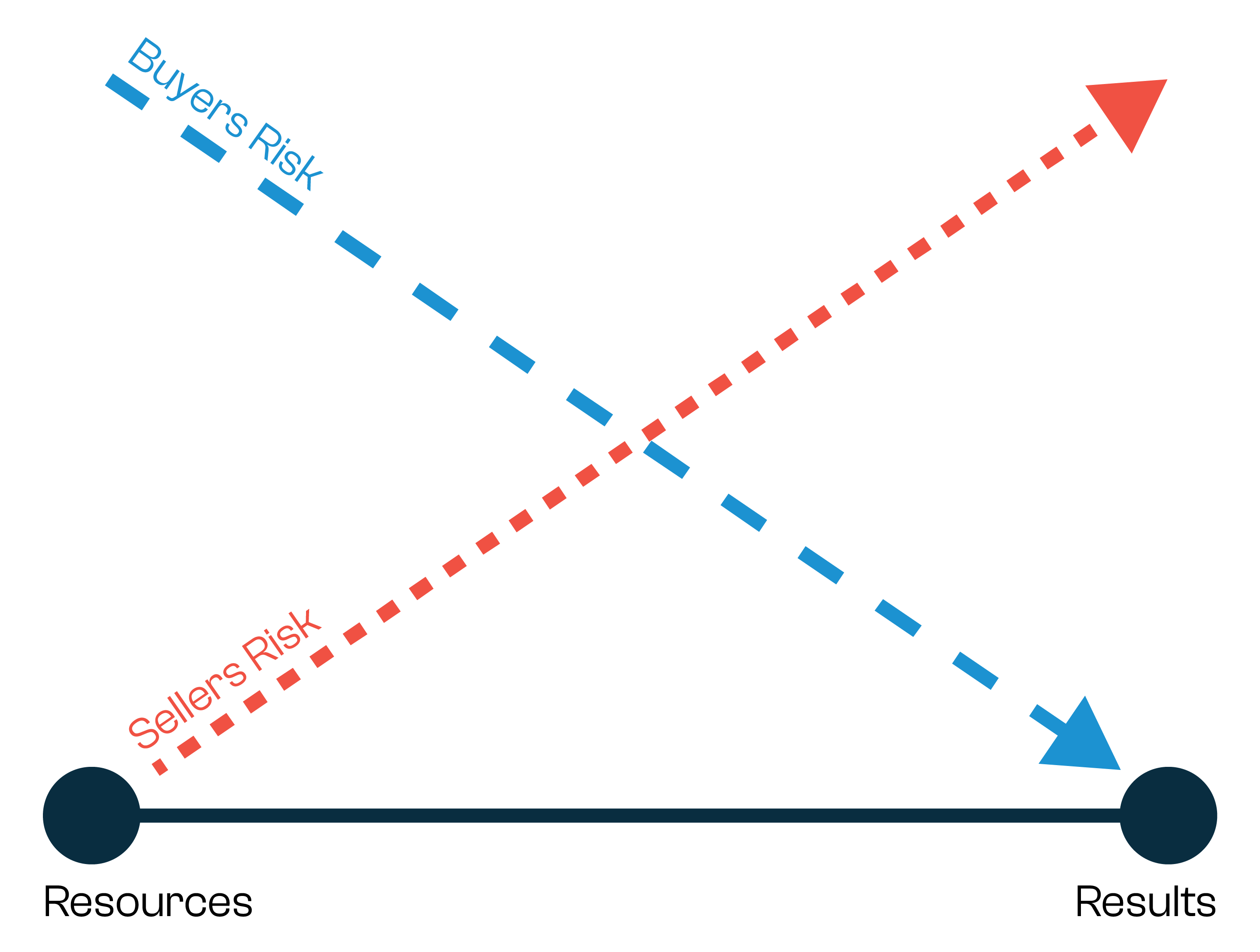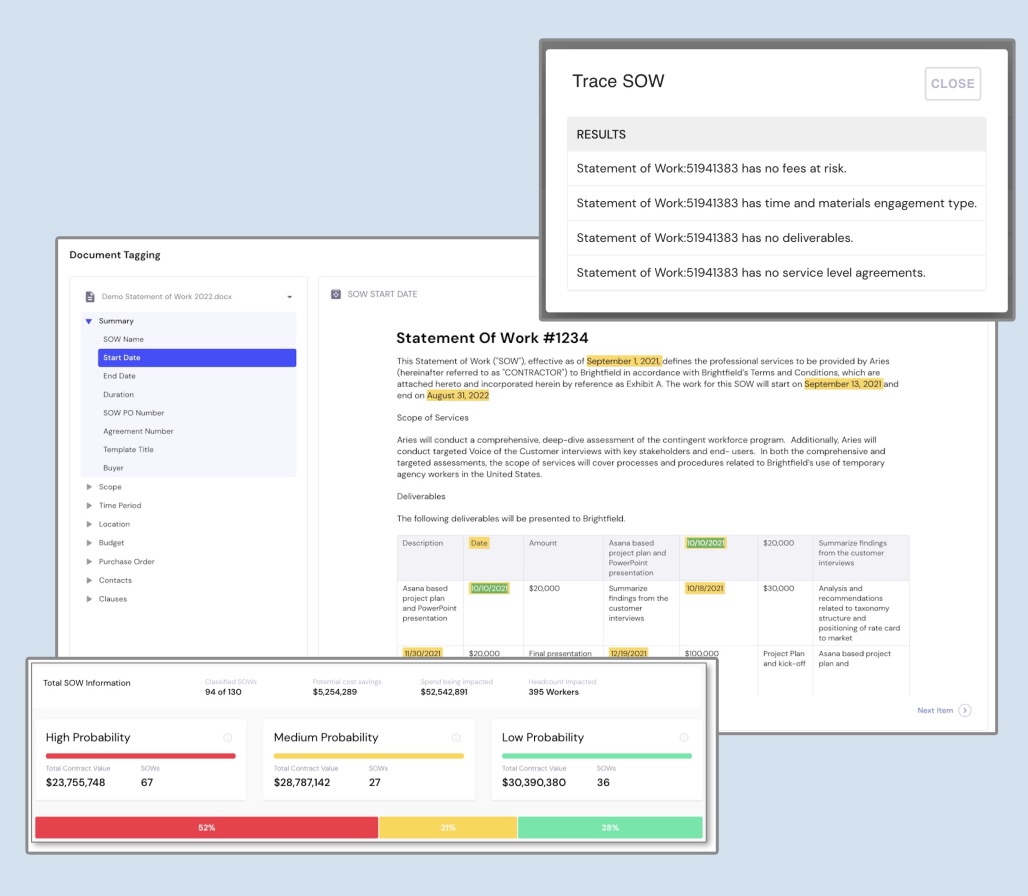Buying Resources or Results: Talking to SOW Stakeholders about Risk

We all have blind spots—I learn things every year that I feel like I should have understood decades ago. One blind spot for many senior business leaders is understanding risk, particularly as it relates to working with consultants and writing statements of work.
Risk can be a complicated subject, but we can approach SOW risk through a simple question: are you buying resources, or are you buying results? If that doesn’t land, we might try a variation:
- Do you need brains or muscle?
- Are you buying capacity or capability?
- Do you need general help, or do you need specific expertise?
What We Expect from Suppliers and from Ourselves
The resources/results questions help the buyer step back and consider the purpose of the engagement, the supplier’s role in the solution, and their own responsibility for the outcomes. Note that these questions aren’t about the content of the purchase, but rather how we expect it to be delivered. As a simple example, consider engaging a developer to build a website: You could pay the person by the hour and direct their efforts (resources purchase), or you could document the website requirements up front and pay them when the work was finished (results purchase).
The answer isn’t always binary: some engagements are a mix of resource support and specific outcomes. For example, a software implementation SOW might include the results of successful system interfaces, plus the resources of ongoing support or training. But each distinct project component should be one or the other.

Understanding what is being purchased (results, resources, or both) is the basis for which party should be assume risk: as a purchase shifts away from resources to results, the buyer’s risk decreases and the seller’s risk increases.
The Right Agreement
Wherever the answer lands, the SOW should include language and terms that align with the risk allocation. Resource-based contracts are simpler because the buyer holds the risk and the supplier simply has to deliver the right types of skilled workers. Results-based agreements require a definition of results with as much clarity as is reasonable. These definitions show up in specific contract terms, including:
- Deliverables
- Milestones
- Service Level Agreements (SLAs)
- Key Performance Indicators (KPIs)
- Acceptance Criteria / Fees as Risk
Together, these results-based clauses define success and indicate when the supplier has done what was intended. If written with sufficient clarity and detail, these contract components provide a clear understanding of what the buyer wants and shift risk to the supplier.
The Wrong Agreement
This is not academic. When senior buyers expect an engagement to solve a problem and deliver an outcome, failure can mean the millions of dollars in waste, unrecoverable loss of time, and sometimes it can cost people their jobs. A well-written results-based SOW protects against those outcomes, but if the outcome is not assured—either through a resources agreement or by vague and unenforceable deliverables—there is often no recourse with the supplier.
Automated SOW Analysis with TDX
Brightfield clients can ensure strong agreements that reduce risk with TDX. TDX assesses SOWs for risk protection by searching for specific terms in agreements. The Quality and Risk Analysis feature analyzes SOWs at scale, using AI to identify the inclusion and strength of contract clauses.

Brightfield clients use TDX to ensure proper risk allocation in draft agreements, and to analyze signed in-progress SOWs. Through TDX they ensure the quality of their SOWs and save money by making sure they are not paying for a level of risk transfer that is not actually provided.
Find Savings fast.

Jack Quarles is the Head of Advisory, Services Procurement at Brightfield where he helps elite companies reduce risk and capture tens of millions of dollars in savings in their SOW programs. Jack has two decades of experience in sourcing as a practitioner and thought leader and authored the bestselling books Expensive Sentences and Same Side Selling.